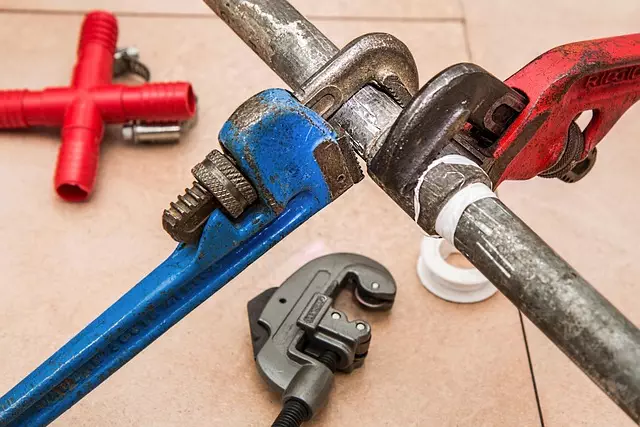Mastering Concrete Repair: Comprehensive Guide to Structural Foundation Restoration
Concrete foundation damage, driven by factors like ground movement, water intrusion, extreme tempera…….

Concrete foundation damage, driven by factors like ground movement, water intrusion, extreme temperatures, or poor construction, leads to visible cracks and weakened structures. Early identification is vital for effective concrete repair, ensuring property longevity and stability. Regular visual inspections are key to minimizing costs and the scope of restoration. Advanced non-destructive testing methods, such as ultrasound, GPR, and infrared thermography, enable professionals to assess structural integrity without damage. Modern techniques like carbon fiber reinforcement, polymer injections, and epoxy patching provide durable and cost-effective solutions. Choosing high-quality concrete mixes and advanced compounds enhances crack sealing and adaptability to changing soil conditions. A comprehensive repair process includes meticulous inspection, preparation, targeted repairs, and protective coatings, adhering to strict engineering guidelines. Avoiding common pitfalls like inadequate assessment or improper techniques is crucial for long-lasting results. Homeowners can opt for DIY methods for minor issues or professional services for complex problems, balancing cost-effectiveness with structural integrity maintenance.
“Uncovering the intricacies of concrete foundation repair is essential for any homeowner seeking to preserve their property’s structural integrity. This comprehensive guide delves into the critical aspects of addressing concrete foundation damage, from identifying common causes and signs to understanding advanced repair techniques.
We explore non-destructive testing methods, material choices, and step-by-step restoration processes, empowering you with knowledge. Learn how early detection can prevent costly repairs and discover cost-effective solutions, including DIY tips versus professional intervention.”
Understanding Concrete Foundation Damage: Common Causes and Signs

Concrete foundation damage is a common issue that can arise due to various factors, each causing distinct signs and requiring specific concrete repair techniques. Understanding these causes and symptoms is crucial for prompt action to prevent further deterioration. Some of the most frequent culprits include ground movement, such as shifting soil or expansive clay, which can lead to cracks and misalignments. Water intrusion, whether from broken pipes, poor drainage, or rain seepage, is another significant contributor, causing concrete to crack, spall, or become weakened over time.
Additionally, extreme temperatures can cause the concrete to expand and contract, resulting in cracks and stress points. Poor initial construction quality, inadequate reinforcing bars, or incorrect mixing ratios can also compromise the foundation’s integrity. Signs of damage include visible cracks on the surface, uneven floors, sticking doors or windows, and sloping walls. Identifying these indicators early is vital for effective concrete repair, ensuring the structural stability and longevity of your property.
The Importance of Early Detection in Concrete Repair

Early detection is key when it comes to concrete repair, as it can significantly impact the overall cost and scope of the restoration process. Concrete structures, over time, are prone to various issues such as cracks, settlement, or erosion, which may go unnoticed until they escalate. Regular visual inspections and maintenance checks are essential to identify these problems early on. Even the smallest sign of distress, like hairline fractures or subtle unevenness, can indicate a deeper issue within the structure’s foundation.
By addressing concrete repair needs promptly, homeowners and building managers can prevent further damage and costly renovations. Ignoring these initial signals may lead to extensive repairs, including replacing entire sections of concrete or even structural reinforcement. Therefore, staying vigilant and scheduling routine assessments is vital to ensure the longevity and stability of concrete structures.
Types of Structural Foundation Repairs: An Overview

When it comes to structural foundation repairs, understanding the various types available is crucial for any homeowner or property manager. One common and effective method involves concrete repair, which addresses issues like cracks, settlements, and heave in concrete foundations. This process often includes techniques such as carbon fiber reinforcement, epoxy injection, and hydraulic cement patching. Carbon fiber sheets are embedded into cracks to provide additional strength and prevent further damage, while epoxies fill smaller gaps and weak points, enhancing the overall stability of the foundation.
For larger structural issues, methods like underpinning and foundation stabilization are employed. Underpinning involves installing new support beams or piles beneath the existing foundation to distribute the load more evenly, reducing stress on the structure. Foundation stabilization techniques, such as piering and piling, involve raising and supporting the foundation with vertical supports, effectively addressing significant settlement or unevenness. Each repair type caters to specific challenges, ensuring the longevity and safety of various types of buildings, from residential homes to commercial structures.
Non-Destructive Testing Methods for Concrete Structures

In the realm of concrete repair, Non-Destructive Testing (NDT) methods play a pivotal role in assessing and mitigating structural integrity issues. These advanced techniques allow professionals to evaluate concrete structures without causing damage, providing invaluable insights for effective repairs. NDT includes various tools like ultrasound, ground penetration radar (GPR), and infrared thermography, each offering unique capabilities. Ultrasound, for instance, is excellent for detecting cracks and voids within the concrete matrix, while GPR penetrates deeper to identify structural anomalies beneath the surface. Infrared thermography, on the other hand, visualizes temperature variations, highlighting potential weaknesses or moisture intrusion.
By employing these non-invasive methods, concrete repair specialists can pinpoint specific problem areas, enabling targeted and cost-efficient solutions. This precision not only enhances the longevity of structures but also minimizes material wastage and construction disruptions. Thus, integrating NDT into concrete repair practices is a game-changer, ensuring structures remain robust and safe for years to come.
Advanced Techniques in Concrete Repair and Reinforcement

In the realm of structural foundation repair, advanced techniques for concrete repair and reinforcement have emerged as game-changers. Modern methods go beyond traditional approaches, offering more precise, durable, and cost-effective solutions. One such innovation is the use of advanced polymers and epoxy injections to fill cracks and reinforce weak areas in concrete structures. These materials not only provide exceptional strength but also resistance to corrosion and chemical attack, ensuring long-lasting repairs.
Additionally, fiber reinforcement technology has revolutionized concrete repair. Carbon fiber sheets or strands are embedded into the concrete, enhancing its tensile strength without significantly increasing weight. This technique is particularly useful for repairing beams, columns, and other load-bearing elements, allowing structures to regain their structural integrity while mitigating future damage.
Choosing the Right Materials for Long-Lasting Repairs

When undertaking structural foundation repair, selecting the appropriate materials is paramount for long-lasting results in concrete repair. The durability and strength of the chosen products directly impact the overall stability and longevity of the structure. For instance, using high-quality concrete mix designed specifically for foundation work ensures a robust repair that can withstand environmental stressors over time.
Proper material selection also considers factors like moisture resistance, especially in regions with high humidity or frequent rainfall. Certain advanced polymeric compounds and epoxy injections are excellent choices for sealing cracks and preventing further damage, offering both strength and flexibility to adapt to the shifting soil conditions beneath a building’s foundation.
Step-by-Step Process of Structural Foundation Restoration

The step-by-step process of structural foundation restoration involves several critical phases designed to ensure lasting stability and integrity. It begins with a thorough inspection to identify the extent of damage, which can range from cracks in concrete to severe settling. Once the problem areas are mapped out, the next phase is preparation, involving the removal of any debris or weakened materials. This meticulous process is crucial for creating a clean canvas upon which effective repairs can be made.
After preparation comes the actual repair work. For concrete repairs, this may involve replacing missing sections with fresh concrete, filling cracks with epoxy injections, or using specialized products to stabilize shifting foundations. Every repair must adhere to strict structural engineering guidelines to ensure the safety and longevity of the foundation. Finally, a protective coating is often applied to shield against future damage, completing the restoration process and safeguarding against potential structural issues down the line.
Common Mistakes to Avoid During Concrete Repair Projects

When undertaking concrete repair projects, several common mistakes can lead to subpar results and even further damage. One of the biggest blunders is failing to properly assess the extent of the damage. Concrete repairs require a thorough understanding of the issue at hand – whether it’s a crack, a hole, or structural instability. Attempting to fix a problem without identifying its root cause will only provide temporary relief.
Another mistake to avoid is using the wrong materials or techniques. Concrete is a complex material that demands specific repair methods tailored to its unique properties. Using general-purpose products or incorrect application techniques can compromise the integrity of the repair, leading to future failures. It’s crucial to consult with professionals and use specialized concrete repair solutions designed for longevity and durability.
Cost-Effective Solutions for Homeowners: DIY vs Professional Repair

For many homeowners, the prospect of repairing structural foundations can be daunting and expensive. However, there are cost-effective solutions to consider, primarily dividing into two options: DIY concrete repair or professional services. Do-it-yourself (DIY) methods offer an appealing, pocket-friendly alternative for minor issues. Homeowners can purchase ready-mix concrete, use simple tools, and follow online tutorials for repairs like cracks or holes in the foundation. This approach empowers folks to take control of their properties’ upkeep, fostering a sense of accomplishment and saving on professional costs.
While DIY concrete repair is accessible and satisfying, it’s crucial to acknowledge its limitations. For more complex problems, such as significant structural damage, uneven settling, or large-scale cracks, professional intervention is indispensable. Foundation repair specialists bring expertise, advanced equipment, and specialized knowledge to accurately diagnose and address deep-seated issues. While the initial cost might be higher, enlisting professionals ensures lasting repairs, prevents further damage, and maintains the home’s structural integrity.







